Mandelic Acid Benefits: 6 Skin Perks, Uses, And 5 Best Products
A gentle chemical exfoliant to unclog your pores and tackle all the skin issues related to them.

Image: Shutterstock
Exfoliating your skin frequently is crucial for rejuvenating the skin and enhancing its appearance. Although chemical exfoliants are effective, they can be harsh on the skin. This is where mandelic acid benefits come into the picture. It is a milder chemical exfoliant and a type of AHA (Alpha Hydroxy Acid) that helps battle dark spots, blackheads, and whiteheads, providing an even complexion. This ingredient is made from bitter almonds and keeps the skin soft and radiant.
In this article, we will dig deeper into the skin benefits of mandelic acid, how it works, how to use it, the five best products containing this mild acid, and the safety precautions to keep in mind. Keep scrolling!

 Did You Know?
Did You Know?In This Article
How Does Mandelic Acid Benefit Your Skin?
There are many benefits of using mandelic acid for your skin. Here’s a list:
1. Reduces Hyperpigmentation
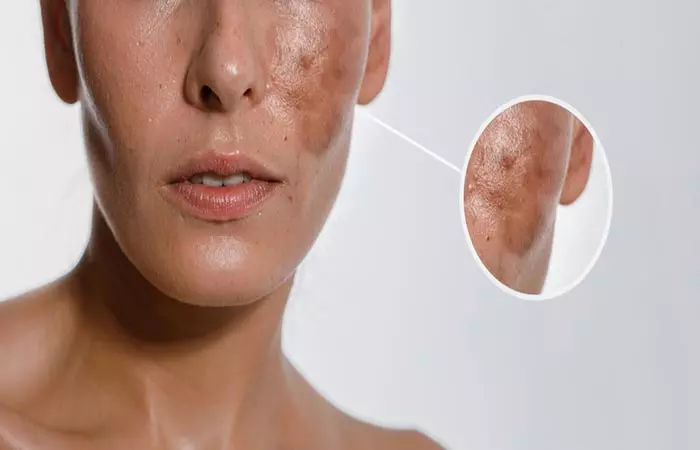
Melasma and post-acne hyperpigmentation can both be effectively reduced by using mandelic acid. A study showed that mandelic acid and salicylic acid can help reduce acne marks (1). Another study found that applying 10% mandelic acid for 12 weeks resulted in a 69% reduction in hyperpigmentation (2).
2. Gentle On The Skin
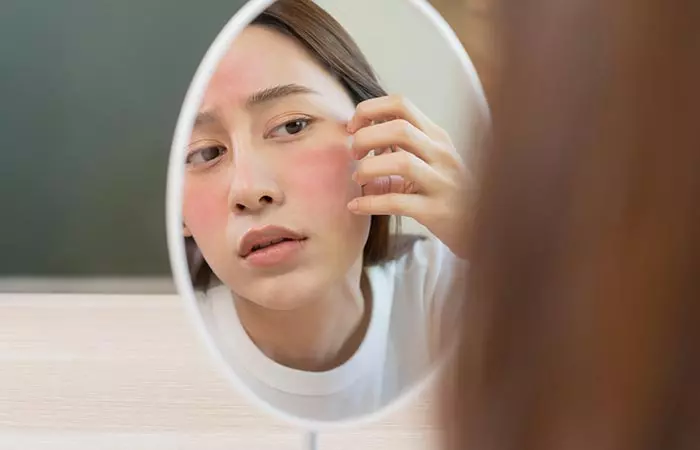
Chemical peels that contain glycolic acid are very effective. But if you have sensitive skin, glycolic acid can irritate your skin and cause post-peel redness, swelling, and hyperpigmentation. Mandelic acid, on the other hand, is gentler on the skin and is the absolute best for sensitive skin types.
A study conducted on Indian patients confirmed that mandelic acid is as effective as glycolic acid as an exfoliant, but the former is better tolerated (3). Another study confirmed that a 45% mandelic acid peel is equally effective as a salicylic acid peel, but mandelic acid is safer and has fewer adverse effects (4).
3. Helps Reduce Acne

If you have acne-prone sensitive skin, mandelic acid could be the best acne treatment option for you to reduce pimples without irritating your skin as well as reducing post-acne dark spots. A study confirmed that a topical cream with 5% mandelic acid can be recommended to patients with moderately severe acne and sensitive skin, and a cream with 10% mandelic acid can be used by people with oily and combination skin (5).
4. Makes The Skin Firm
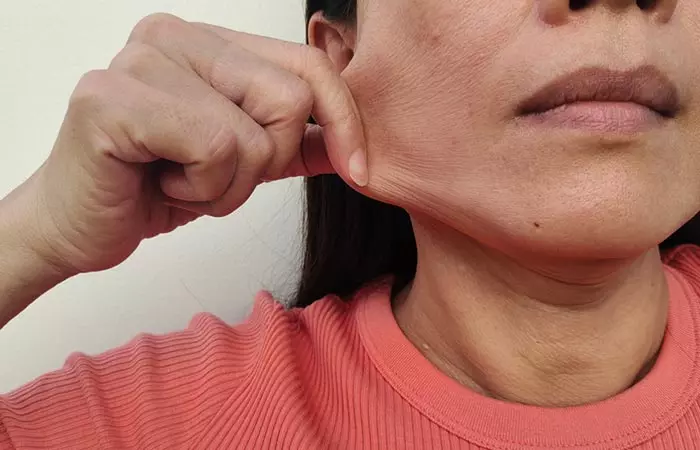
As you age, your skin starts losing its elasticity and firmness. The production of collagen, a skin protein that is responsible for your skin’s firmness and elasticity, decreases. This results in loose skin. A study conducted on people aged 42-68 for 4 weeks who applied mandelic acid twice a day showed an improvement in skin firmness by 23.8% and lower eyelid skin elasticity by 25.4% (6).
5. Improves Skin Texture
Wrinkles and fine lines caused by decreased collagen or a poor lifestyle can make your skin texture uneven.
Decreased sebum production also accelerates skin aging. Using mandelic acid can help even out the skin texture, increase cell turnover, and make it look glowing and plump. A study confirmed that chemical peels with 20% azelaic acid and 40% mandelic acid can help improve sebum secretion in aging skin (7).
6. Clears Up The Skin
As mentioned earlier, mandelic acid can help clear up acne (5). It is also claimed to even out the skin tone and remove the upper dead skin layers. This ultimately makes your skin look clearer, brighter, and lit from within. Since it is gentle on the skin, you also do not need to worry about redness or hyperpigmentation from applying mandelic acid.
These are the ways mandelic acid helps your skin look fresh, clean, spotless, and firm. But, what is the science behind mandelic acid? How does it really work? Scroll down to find out in the next section.
Key Takeaways
- Mandelic acid reduces hyperpigmentation, helps heal acne, improves skin texture, and firms the skin.
- It is suitable for all skin types, including dry skin, acne-prone skin, and sensitive skin.
- However, you should always wear sunscreen while using mandelic acid to protect your skin.
How Does Mandelic Acid Work?
Mandelic acid has a larger molecular structure compared to other AHAs (glycolic acid and lactic acid). This is the reason why mandelic acid takes longer to penetrate your skin. This property makes it a good exfoliant for all skin types, including dry skin, acne-prone skin, and sensitive skin.
Amandine, a beauty blogger, shared her experience of using mandelic acid for her sensitive skin: “I had better luck with the mandelic acid last night but am still cautious. This morning I woke up to dewy skin with smoother-looking pores, but in the shower, I noticed that the texture was a little bumpy along my cheeks. This means that the mandelic is either plumping up my skin or creating some form of irritation (i).”
Studies show that mandelic acid is as effective as glycolic acid, lactic acid, or salicylic acid at exfoliating the skin (3), (4). Thus, mandelic acid is effective and gentle.
Keep reading to know more about how the gentle mandelic acid differs from the potent glycolic acid and how the two contribute to skin care.
Mandelic Acid Vs. Glycolic Acid
As mentioned above, both mandelic acid and glycolic acid are AHAs. And the benefits of alpha hydroxy acids (AHA) for your skin are gentle yet effective. However, these two AHAs do have different properties and deliver different benefits.
Glycolic acid addresses fine lines, wrinkles, and uneven or rough skin texture alongside hyperpigmentation and skin tone problems (8). Anecdotal reports also claim it can treat stubborn pigmentation and texture issues that have persisted for years. However, it may cause irritation and redness in people with sensitive, acne-prone skin or skin conditions like rosacea.
Mandelic acid may be slower and have subtler anti-aging benefits for the skin, but it is a better choice for beginners and those with irritation-prone skin. It also allows frequent touch-ups and shorter breaks between treatments due to better tolerability (9).
Keep reading how you can use this beginner-friendly AHA to get glowing skin.
How To Apply Mandelic Acid

Step 1: Wash your face with a gentle cleanser. Use a soft towel to pat your face dry.
Step 2: Apply a skin toner and wait for 2-3 minutes.
Step 3: Take 2-3 drops of mandelic acid on your fingertips and massage it into your skin for about 5 minutes.
Step 4: Wait for 20 minutes to allow the mandelic acid to sink into your skin. Then apply a moisturizer.
 Quick Tip
Quick TipNote: The best time to apply mandelic acid is at night.
Easy, isn’t it? However, if you do not follow the proper method to use mandelic acid, you may not see the desired results. Here’s a quick rundown of how to use mandelic acid properly. Take a look!
How To Properly Use Mandelic Acid
Mandelic acid is usually found in serum form. It is also included in face creams. Here is a safe way to use mandelic acid on your skin:
- Start With The Lowest Concentration: Using a higher concentration of mandelic acid, especially if you have active cystic acne or sensitive skin, you can experience skin irritation, redness, and more breakouts. If you have dry skin, a higher concentration of mandelic acid can further dry out the skin. So, start off with 5% or 10% mandelic acid.
- Gradually Increase The Frequency: Use mandelic acid once a day to see how your skin reacts to the particular concentration. You can then gradually increase it to twice a day with the same concentration of mandelic acid. If your skin tolerates it well, you can increase the concentration and keep using it twice a day.
- Use It All Over Your Face: To see a more evened-out result, experts suggest using mandelic acid all over your face instead of just using it as a spot treatment.
- Massage It Well Into Your Skin: Mandelic acid takes longer to penetrate into your skin. That is why, to make it work, massage it into your skin until it gets absorbed completely. Just pushing it into your skin for a minute and then slathering on the next product will not allow mandelic acid to work its way into your skin. Take your time and massage your face with your fingertips, a face massager, or a good derma roller for 5-10 minutes to get the best results.
Now that you know how to properly use and apply mandelic acid, here’s the last bit you should be aware of mandelic acids safety precautions.
Safety Precautions
- Do A Patch Test: Even if you start off with the lowest concentration of mandelic acid, you must always do a patch test. Apply some mandelic acid on your jaw and see if there is any adverse reaction over the next 24-48 hours. If you experience redness, itching, swelling, etc., either lower the mandelic acid concentration or avoid using it.
- Protect Your Skin From The Sun: All types of chemical exfoliants are acids. Acids tend to make your skin sensitive to UV rays. Stepping out without applying sunscreen may burn your skin and cause hyperpigmentation. So, if you are using mandelic acid, follow it up with a sunscreen with good SPF to keep your skin protected.
- Do Not Mix It With Potent Exfoliants: Avoid mixing mandelic acid with strong exfoliants like glycolic acid, salicylic acid, lactic acid, or retinol to prevent irritation, dryness, and over-exfoliation.
Take these safety measures, and your skin will not act out when you first introduce it to mandelic acid. Read the comprehensive skin care acids guide to understand how to incorporate mandelic acid into your routine for radiant skin. There are many types of mandelic acid available on the market. Here are the top 5 mandelic acids that you can check out.
If you have never tried facial acids and have sensitive skin, you can try mandelic acid in your skin care routine. This gentle exfoliant is an alpha hydroxy acid. However, unlike glycolic acid, mandelic acid has a large molecular structure and does not penetrate the skin as deeply as other AHAs. Therefore, it does not irritate the skin but gets the job done. Mandelic acid benefits the skin in many ways and effectively reduces inflammation, pigmentation, and sun damage. It is also an effective anti-aging, skin brightening, and blemish control ingredient. It is perfect for all skin tones, especially deeper skin tones. If you are new to exfoliating acids, go for mandelic acid. Just be sure to start slowly and listen to your skin to avoid irritation or over-exfoliation.
Frequently Asked Questions
Can you use mandelic acid every day?
You can use a product containing low concentrations of mandelic acid every day. However, the frequency depends on your skin’s tolerability to this AHA.
Is mandelic acid better than salicylic acid?
Both are effective in reducing acne. However, mandelic acid is more gentle than salicylic acid and is suitable for managing inflammatory acne. On the other hand, salicylic acid works better in treating whiteheads and blackheads.
Can I use Vitamin C and mandelic acid together?
Yes. Mandelic acid and vitamin C may help reduce hyperpigmentation and make your skin look clearer and brighter.
Can I use niacinamide and mandelic acid together?
Yes. You may use niacinamide and mandelic acid to brighten and soften your skin and minimize breakouts.
What can I not mix with mandelic acid?
Avoid using other AHAs like glycolic and lactic acids and retinol with mandelic acid to prevent irritation and dryness.
Note:
Do this only at night. Also, apply an SPF 50 sunscreen before stepping out into the sun.
Illustration: Best Mandelic Acid Benefits And How To Use It For The Skin

Image: Dall·E/StyleCraze Design Team
Mandelic acid might be the perfect peel for your skin! Discover its benefits and how to use it to get the best results from the video below.
Personal Experience: Source
StyleCraze's articles are interwoven with authentic personal narratives that provide depth and resonance to our content. Below are the sources of the personal accounts referenced in this article.
i. My MUAC Experiencehttps://amandineusesmuac.wordpress.com/
References
Articles on StyleCraze are backed by verified information from peer-reviewed and academic research papers, reputed organizations, research institutions, and medical associations to ensure accuracy and relevance. Read our editorial policy to learn more.
- Chemical Peels for Melasma in Dark-Skinned Patients,
https://www.ncbi.nlm.nih.gov/pmc/articles/PMC3560164/ - Comparative Study of 35% Glycolic Acid, 20% Salicylic-10% Mandelic Acid, and Phytic Acid Combination Peels in the Treatment of Active Acne and Postacne Pigmentation,
https://pubmed.ncbi.nlm.nih.gov/31619887/ - Comparative Evaluation of Efficacy and Tolerability of Glycolic Acid, Salicylic Mandelic Acid, and Phytic Acid Combination Peels in Melasma,
https://pubmed.ncbi.nlm.nih.gov/26859648/ - Comparative study of efficacy and safety of 45% mandelic acid versus 30% salicylic acid peels in mild-to-moderate acne vulgaris,
https://pubmed.ncbi.nlm.nih.gov/31553119/ - Evaluation of the efficacy and tolerability of mandelic acid-containing cosmetic formulations for acne skin care,
https://www.researchgate.net/publication/282774826_Evaluation_of_the_efficacy_and_tolerability_of_mandelic_acid-containing_cosmetic_formulations_for_acne_skin_care - Effects of Topical Mandelic Acid Treatment on Facial Skin Viscoelasticity,
https://pubmed.ncbi.nlm.nih.gov/30513536/ - Influence of azelaic and mandelic acid peels on sebum secretion in ageing women,
https://www.ncbi.nlm.nih.gov/pmc/articles/PMC3834725/
Read full bio of Dr. Kendall R. Roehl
Read full bio of Ramona Sinha
Read full bio of Anjali Sayee
Read full bio of Shiboli Chakraborti







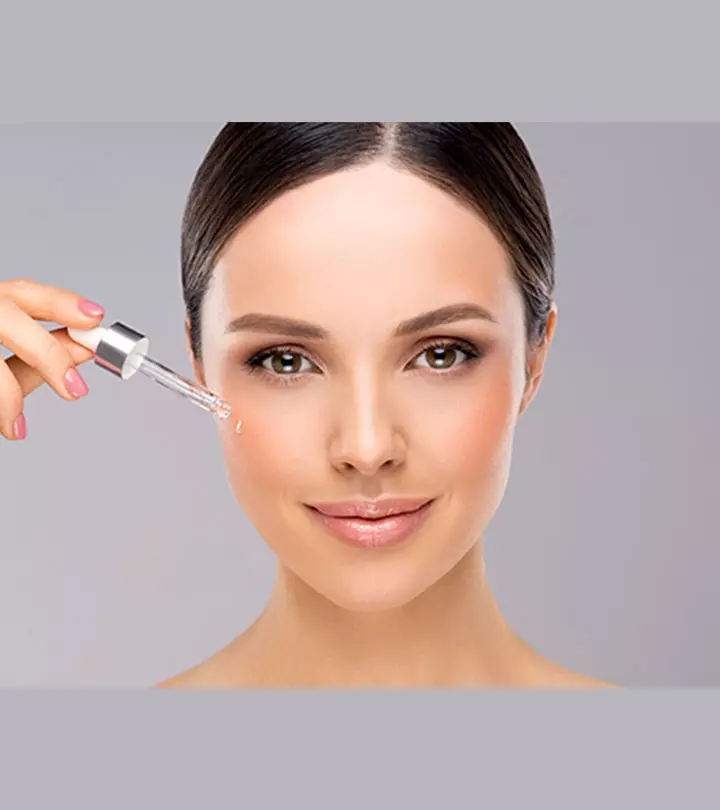
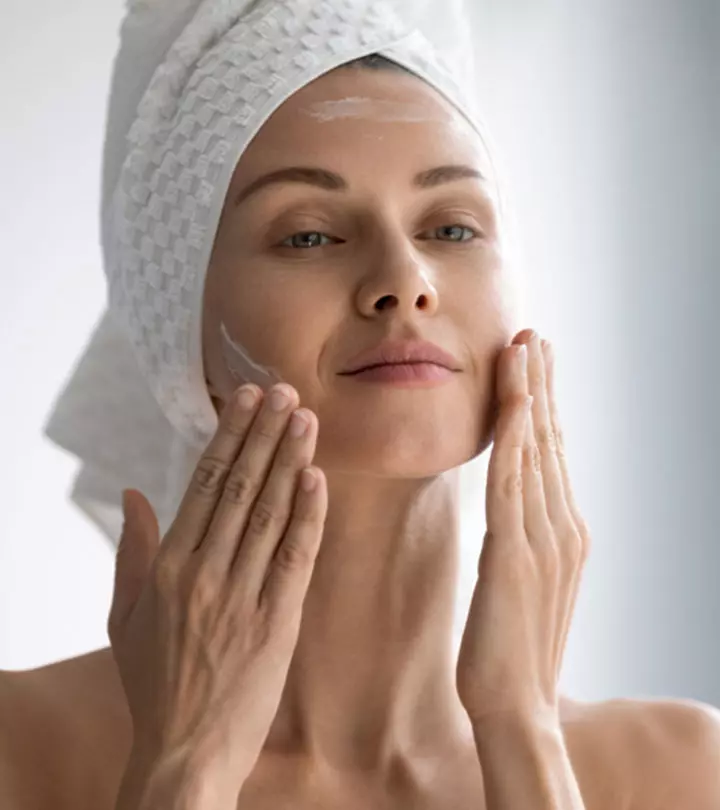



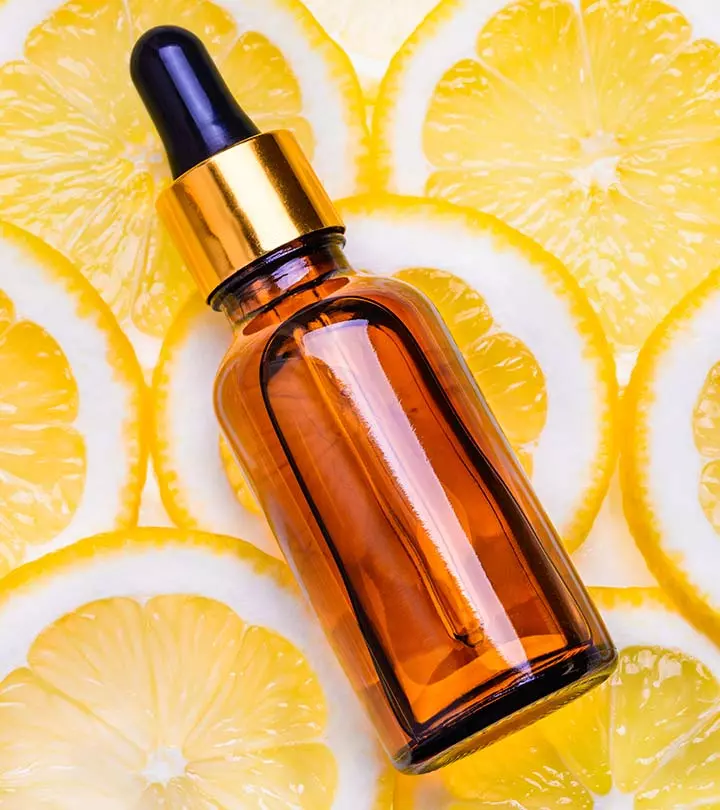



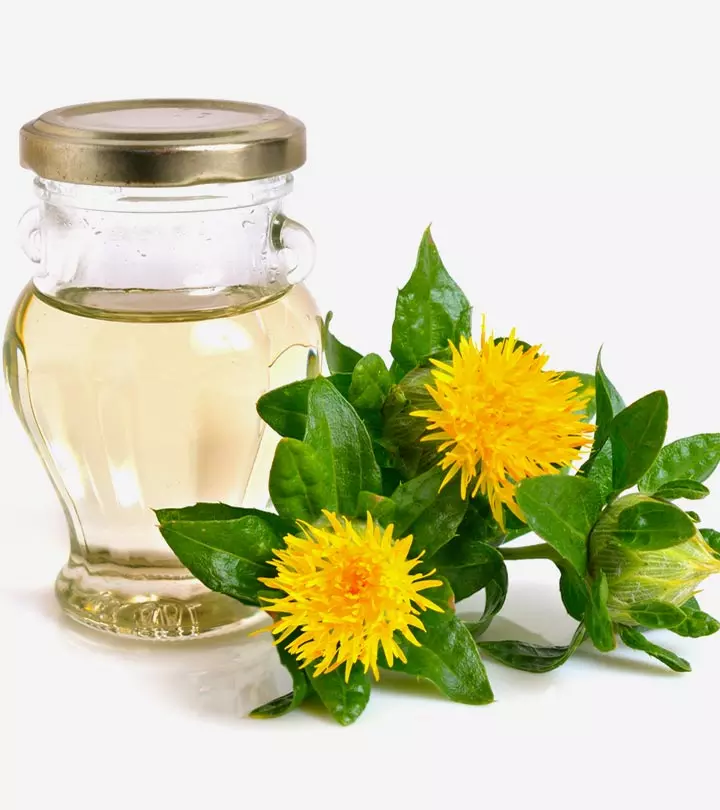








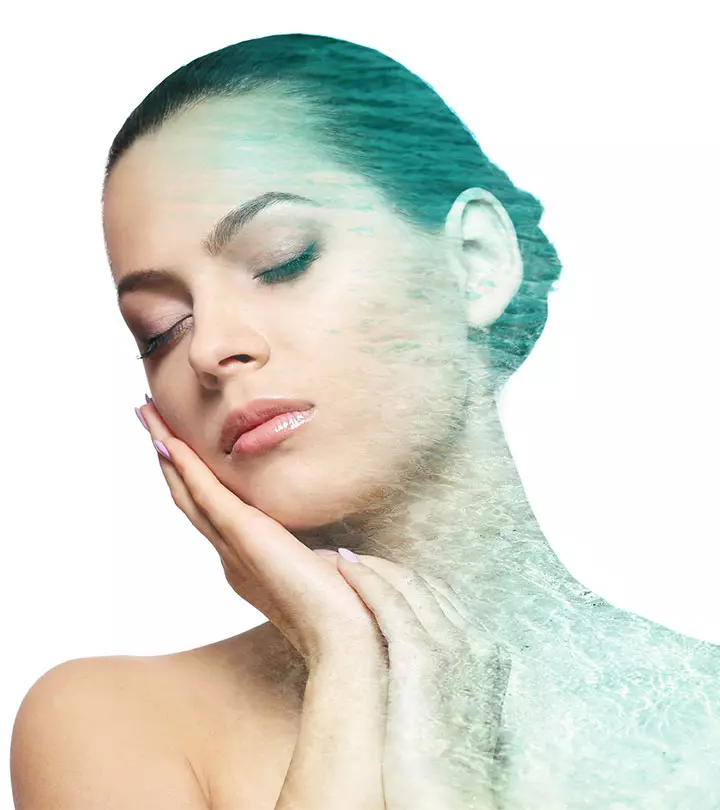
Community Experiences
Join the conversation and become a part of our empowering community! Share your stories, experiences, and insights to connect with other beauty, lifestyle, and health enthusiasts.